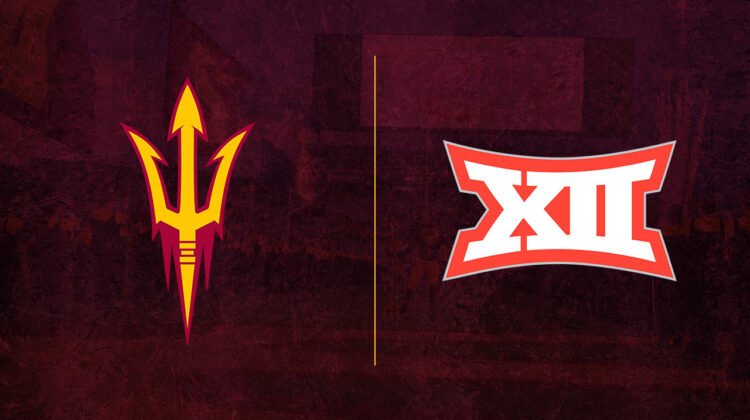The Pac-12 took an unprecedented step forward, departed the scene and lost an icon — all in five remarkable days.
First, the university presidents voted, along with their peers across the country, to share revenue with athletes and end NCAA amateurism forever.
Then came the conference’s baseball tournament, the final competitive event under the Pac-12 banner (as we know it).
The whirlwind ended Monday with the passing of Bill Walton, the ultimate champion of the ‘Conference of Champions’.
This column is not about any of that.
It’s about a development that was easy to overlook but entirely predictable: Arizona State promoted Graham Rossini to the role of athletic director following a six-month search.
We have some thoughts on the decision — of course we do — and very few of them have anything to do with Rossini himself.
ASU president Michael Crow has done it again, folks, filling a key role in his athletic department with someone who would not have been hired for the job at any other power conference school.
Remember when Crow picked Ray Anderson for the athletic director post back in 2014, after Anderson stepped down from his position in the NFL’s front office? At the time, Anderson had no experience running a major college athletic department.
Remember when Crow and Anderson appointed a TV analyst as ASU’s head football coach? At the time, Herm Edwards had been out of coaching for a decade and out of college football for 30 years.
Well, now comes Rossini.
At a time of unprecedented change in college sports, when experience is vital, Crow did not seriously consider any other candidates to lead ASU athletics.
Well-connected, long-held industry contacts? Not important.
Experience hiring football and basketball coaches? Unnecessary.
Only Crow can make an internal promotion seem like an outside-the-box hire.
The same man who has done so much good for the university writ large has done so much damage to ASU’s athletic department.
Is this another step on the road to the abyss?
Multiple sources told the Hotline that Rossini, an ASU alumnus, is a competent administrator who, in stark contrast to his immediate predecessor, doesn’t believe he has all the answers.
His expertise is in external relations, honed through years as the Arizona Diamondbacks’ vice president for special projects and fan experience. That’s good news for a department desperate to improve relationships with key constituents.
Put another way: Rossini is more qualified for his role than Anderson and Edwards were at the time of their appointments.
But does he stand a chance?
The second he accepted the position, Rossini was understandably cast as Crow’s puppet — his success or failure inexorably tied to the whims of a boss whose brand is mud with many fans and donors.
Which means Rossini is wholly dependent on Crow channeling his inner George Costanza and doing the opposite of every instinct he’s ever had on matters involving college athletics.
After all, Crow led the charge to hire former Pac-12 commissioner Larry Scott, negotiated Scott’s insane contract, provided boardroom cover for Scott’s top-down management style, ignored excessive spending at the conference office, supported the Pac-12 Networks’ failed business model, doubled down on the conference’s misguided media rights strategy and effectively rode shotgun as Scott steered the Pac-12 toward the cliff.
Along the way, Crow hired Anderson and Edwards, refused to upgrade Desert Financial Arena, claimed publicly that Edwards wasn’t involved in the NCAA recruiting scandal — in fact, he was very, very involved — and waited until five days before the 2023 season to announce the bowl ban.
In other words, Crow has gotten just about everything wrong for the past 15 years.
And yet he has done so much good for the university. It’s a remarkable contradiction that would make a fascinating case study.
Already, there are warning signs for the Rossini era.
Upon announcing the move, Crow explained that the Sun Devils are changing their internal structure and wrapping athletics into the university.
“What’s happened in the past was athletics was considered a separate thing, called an auxiliary enterprise,” Crow said last week. “It’s not an auxiliary enterprise anymore. It’s in the core of the enterprise of ASU itself.”
And with that, more than $300 million in athletic department debt, which includes expenses related to the stadium renovation, was removed from the books.
(If Crow can do that, why can’t he authorize a major renovation of Desert Financial Arena to help his basketball program? The answer is that he could authorize the project but doesn’t believe it’s necessary.)
The new model in Tempe comes at a time when many schools are exploring the possibility of separating athletics from the university in order to navigate the revolutionary economic model — sharing revenue with athletes — that’s likely to be implemented in the fall of 2025.
While Crow hinted the “structure for finances” will give athletics more financial freedom, we wonder if a tighter bond with central campus will lead to more internal controls, less freedom for Rossini to respond to events on the front lines and additional missteps for a department grasping for traction.
Rossini undoubtedly understands what’s required for ASU to escape the current morass. But does he possess the authority to take the necessary steps without Crow’s blessing?
Consider us skeptical.
Until there’s proof to the contrary, we’ll assume Rossini is reliant upon the blessing of a president whose every instinct, at least when it comes to college sports, is wrong.
*** Send suggestions, comments and tips (confidentiality guaranteed) to pac12hotline@bayareanewsgroup.
*** Follow me on Twitter/X: @WilnerHotline
*** Pac-12 Hotline is not endorsed or sponsored by the Pac-12 Conference, and the views expressed herein do not necessarily reflect the views of the Conference.
Related posts:
 Wilner Hotline – Sunday Judgements Around Pac-12
Wilner Hotline – Sunday Judgements Around Pac-12
 Wilner Hotline – Thanksgiving Day Pac-12 Doings
Wilner Hotline – Thanksgiving Day Pac-12 Doings
 Wilner Hotline: Arizona State hires Kenny Dillingham The risk, the challenges and the path forward for a program in need of repair
Wilner Hotline: Arizona State hires Kenny Dillingham The risk, the challenges and the path forward for a program in need of repair
 Wilner – Arizona, ASU search for new athletic directors: For both schools, challenges looms as college sports prepare for a new era
Wilner – Arizona, ASU search for new athletic directors: For both schools, challenges looms as college sports prepare for a new era


